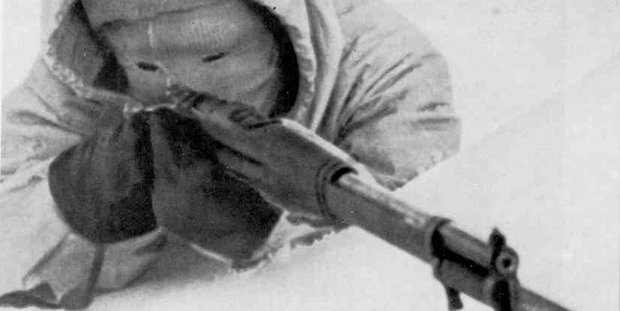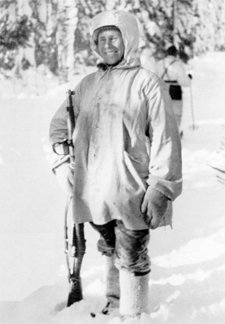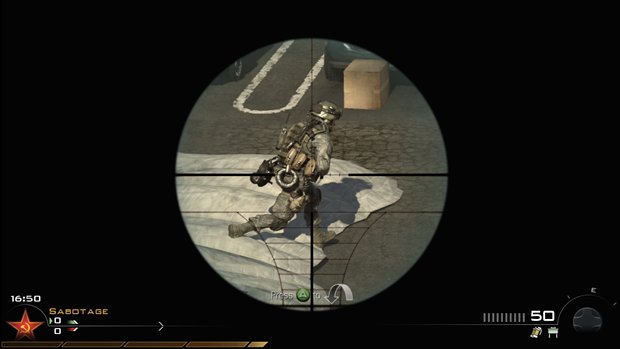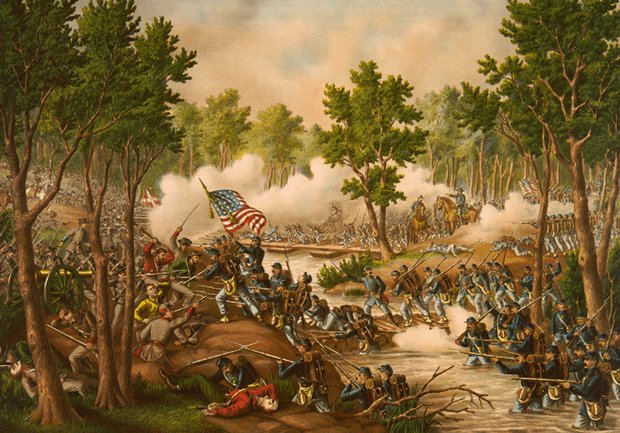Sniping in war and videogames: Why it's hated, why it's loved, and why we do it
Sergio Leone, Steven Spielberg, the USSR, and our love of ballistic accuracy

Above: H%26auml;yh%26auml; in his White Death garb, being badass
If you%26rsquo;re like me, you%26rsquo;re addicted to choosing the biggest, loudest, and slowest-reloading gun in multiplayer shooters and picking off unsuspecting specks of heads until the sun comes up. You are awesome, and this brief history of sniping ought to reassure you of that. But if you%26rsquo;re a hater, then read on anyway %26ndash; you%26rsquo;ll probably still despise the way we play, but at least you%26rsquo;ll understand why we love making you run for cover.
Snipers work for the same reason they're despised

H%26auml;yh%26auml; was a hell of an annoyance to the Soviets, whose already low morale (Stalin wasn%26rsquo;t the best boss) was further ravaged by the ferocity of Finns%26rsquo; resistance. Despite being heavily outnumbered (32 tanks versus the Soviets%26rsquo; two-to-six thousand), the spirited Finns fought harder (and with better aim), and resisted the invasion. The Moscow Peace Treaty ended the war in 1940, and though Finland was forced to relinquish a chunk of territory and assets, it had already embarrassed the fur hats right off the Soviets%26rsquo; heads.
An unknown Soviet general is reported to have commented, "We gained 22,000 square miles of territory. Just enough to bury our dead." That quote may or may not be fiction, but its sentiment is true. The Soviets lost 126,875 soldiers, while the Finns lost only 25,904.
Sadly, none of H%26auml;yh%26auml;%26rsquo;s targets respawned and spat profanities at him through a headset - they were dead. Real war is a lot more depressing than virtual war, but the principles are the same. Every time a sniper in CoD or Battlefield frustrates the profanities out of you, you%26rsquo;re falling victim to one of the primary goals of real-world sniping, and what helped the Finns hold off the Soviets: demoralization.
And if you despise the strategy in general, even when it%26rsquo;s working to your advantage, you%26rsquo;re not alone in the real-world either %26ndash; despite their effectiveness, snipers weren%26rsquo;t always romanticized war heroes, they were damned unsportsmanlike. A telescope on a rifle? Pish posh!

Above: Damn camper!
Sign up to the GamesRadar+ Newsletter
Weekly digests, tales from the communities you love, and more
Fun Fact! Military sharpshooters weren%26rsquo;t called %26ldquo;snipers%26rdquo; until the 1800s, when the term was used in reference to hunters of the well-camouflaged snipe, a species of wading bird. Snipe hunters in British India were called %26ldquo;snipers,%26rdquo; and their reputation for marksmanship caused the term to be carried over.
The origins of sniping in war and Quake II
Sniping has been around since projectiles could travel further than an arm%26rsquo;s throw. Perhaps 16th-century ninjas, who concealed themselves and struck with poisoned blow darts, were some of the first military snipers, but sniping in the modern sense didn%26rsquo;t appear until around the 1700s.
During the American Civil War, Sgt. Grace, a Confederate sharpshooter, allegedly picked off Major General John Sedgwick from 800 to 1000 yards at the Battle of Spotsylvania. The roughly half-mile shot with what was likely a British Whitworth sharpshooter rifle wasn%26rsquo;t unheard of in target practice, but it was nevertheless an impressive kill.

Urban legend has it that either Sgt. Grace was killed just after his famous shot while cockily refusing to take cover (%26ldquo;They couldn%26rsquo;t hit an elephant from thi-aauuughh!%26rdquo;), or that it was Sedgwick who had been chastising his troops for ducking. Either way, they both died.

Above: Engagements at Laurel Hill %26amp; NY River during The Battle of Spottsylvania. Notice that no one is hiding in the trees and firing into those silly, tightly-packed formations



